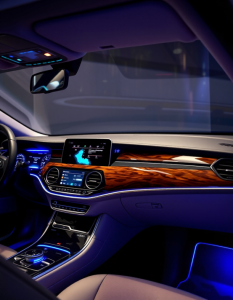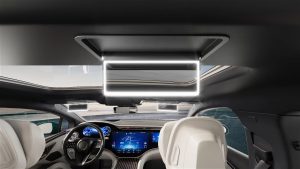Traditional microphones were typically fixed in position within the car, employing basic motorized and acoustic technologies. しかし, with the rapid evolution of in-car entertainment systems and communication technologies, in-car microphones are undergoing upgrades. Kepo’s in-car microphones integrate advanced features such as hands-free calling, 音声認識, and ANC (Active Noise Cancellation), thereby offering drivers a more convenient and safer driving experience.
Key features of Kepo’s in-car microphones include:
Hands-free calling and voice recognition pickup: These microphones seamlessly integrate with in-vehicle multimedia systems to enable hands-free calling and voice recognition pickup. They boast a compact size, high degree of integration, and can be utilized in array applications.
Integration with ANC and A2B bus connection: Kepo’s microphones feature active noise cancellation for superior call quality, utilizing A2B bus connection for high scalability and excellent EMC (Electromagnetic Compatibility) performance.
ANC noise reduction, phantom power, and multi-mic connection: These microphones offer advanced ANC noise reduction capabilities, phantom power support, and the ability to connect multiple microphones for enhanced audio clarity.
Design advantages of Kepo’s microphones include:
Dustproof net material: Utilizing PET material for dustproof net ensures consistent sound resistance.
Traceability information: Each microphone shell is bound with traceability information, minimizing the risk of loss.
Acoustic cavity design: Kepo’s microphones feature a well-sealed acoustic cavity design, preventing acoustic leakage and ensuring high-quality sound reproduction.
High SNR and low sound pressure: These microphones deliver high SNR (Signal-to-Noise Ratio) and operate effectively under low sound pressure conditions, resulting in superior sound reproduction.
Frequency response: They incorporate low-frequency noise reduction processing for enhanced audio performance.
将来の開発:
先を見ています, the future development of microphones in vehicles will likely involve integration with voice assistants, emotion recognition technology, safety monitoring features, communication and entertainment systems, personalized experiences, and light human-computer interaction functions. This evolution aims to achieve a more natural human-computer interaction interface, ultimately enhancing driver convenience and safety on the road.







